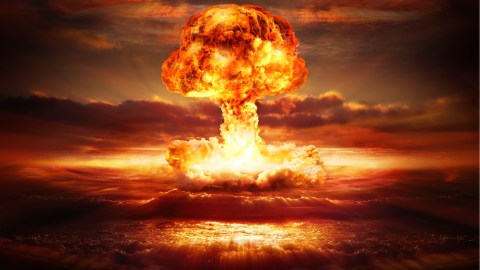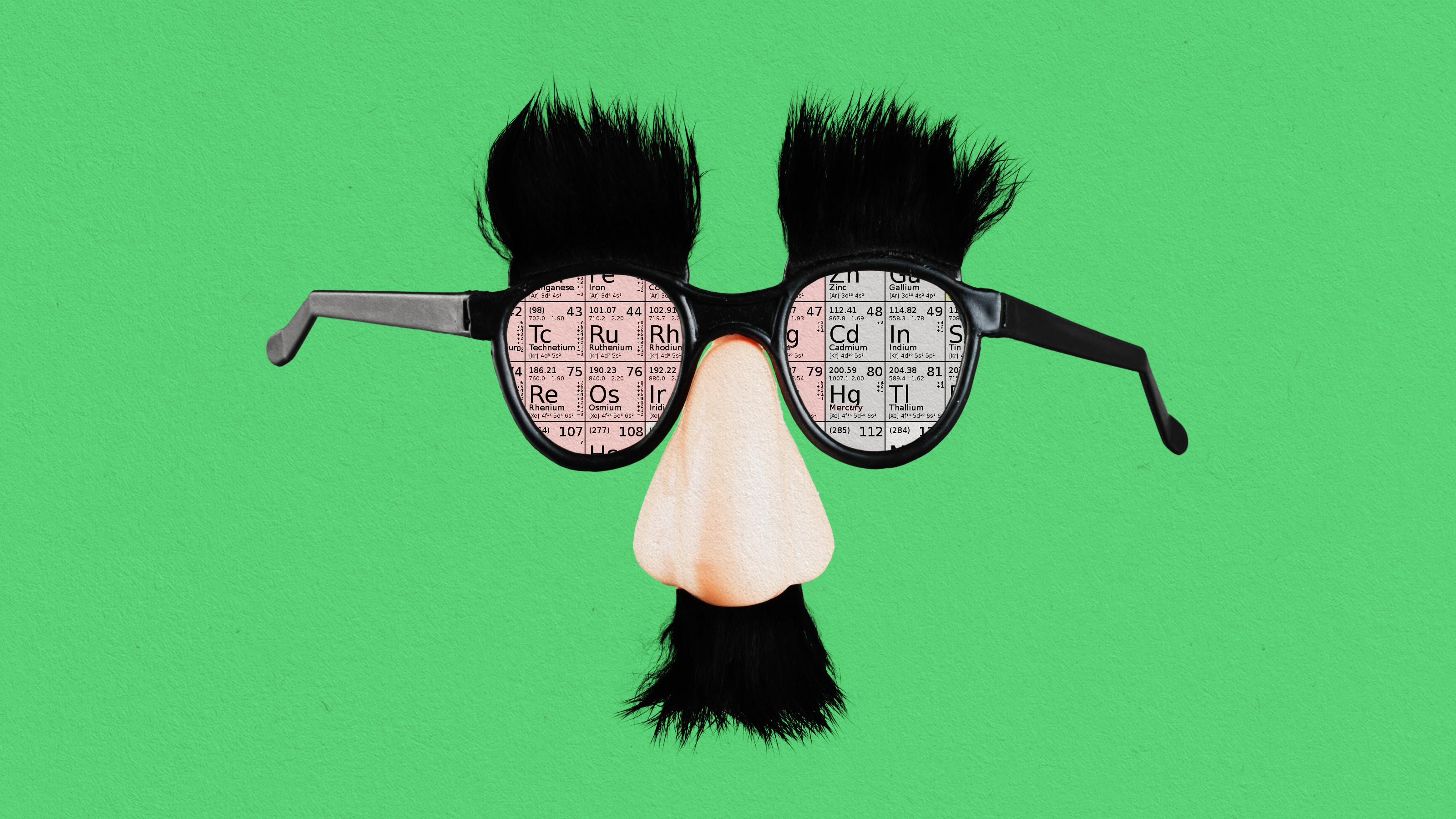Fear of the future: A world gone M.A.D.

Many people would say the world is going mad, but we can likely find ways to deal with that. What we can’t deal with, however is a world gone M.A.D.
M.A.D. stands for Mutually Assured Destruction, an accurate description of what would happen if the world’s countries armed with nuclear weapons engaged in direct, all-out confrontation. It may seem far-fetched as we distance ourselves form the Cold War. Yet, it is the most dangerous existential threat to our collective survival. Not just ours, but also that of countless other life forms on the planet.
In 1933, as Hitler was ascending to power in Germany, Hungarian physicist Leó Szilárd proposed the notion of a nuclear chain reaction, whereby neutrons released from radioactive atomic nuclei would hit other heavy nuclei like little bullets, causing them to split (fission) into smaller nuclei. Every time this splitting happened, a little bit of energy was released. Do it for a huge number of atoms really fast and you get a chain reaction, releasing a huge amount of energy. In 1939, together with Enrico Fermi, Szilárd showed that a multiplication of released neutrons was possible.
Szilárd knew that the possibility of a chain reaction represented a critical turn in history. An explosive device with an uncontrolled chain reaction would have devastating consequences. Szilárd convinced Einstein to write a letter to Franklin Roosevelt urging the US to start a serious bomb-making effort, before the Nazis did. The result, in late 1941, was the Manhattan Project, a massive secret effort in Los Alamos led by J. Robert Oppenheimer and overseen by Major General Leslie Groves.
On July 16, 1945, the first fission bomb was detonated in the desert of Alamogordo in New Mexico. The mushroom cloud went 40,000 feet up in the air and broke windows 100 miles away. Years later, reminiscing about the dramatic event, Oppenheimer famously quoted from the Bhagavad Gita: “Now I am become Death, the destroyer of worlds.”
Just a few weeks after the successful test, on August 6 and August 9, the U.S. dropped nuclear bombs on Hiroshima and Nagasaki—still the only use of atomic weapons on a civilian population. Within a few months, between 90,000-146,000 people died in Hiroshima and 39,000-80,000 in Nagasaki.
In May 2016, President Barack Obama visited Hiroshima to offer his respects for the victims—the first visit to Hiroshima by a sitting U.S. president. “We have known the agony of war,” he said. “Let us find the courage, together, to spread peace, and pursue a world without nuclear weapons.”
Unfortunately, we are very far from this goal. After the fission bomb came the much more powerful fusion or thermonuclear bomb, or H-bomb, whereby for fractions of a second the fusion of isotopes of hydrogen into heavier nuclei repeats the processes that in related ways light up the sun and stars. It is the closest realization of the Promethean myth, humanity controlling the fire that the gods used to light up the heavens.
From the Cold War to the present
The U.S. built its first H-bomb in 1952, believing it would guarantee its total nuclear supremacy. In less than year, the Soviets had tested their first H-bomb. Panic ensued.
During the 1950s and 1960s, the world witnessed an accelerated buildup of its nuclear arsenal. The Cold War was in full effect. As former Secretary of Defense William J. Perry reported in his memoir, My Journey at the Nuclear Brink, only sheer luck prevented the 1962 Cuban Missile Crisis from deteriorating into a full-blown nuclear war by sheer luck. Working then at gathering information about the Soviet missiles being deployed in Cuba, Perry believed that every day would be “my last day on earth.”
At the height of the Cold War, the U.S. had 1,054 intercontinental ballistic missiles and 656 submarine-launched ballistic missiles. Different sources cite different numbers; for example, the online textbook Alpha History reports that by 1962 the U.S. had almost 7,000 nuclear warheads while Soviet Russia had 500. In any case, the numbers are staggering. Soon, other countries would be part of the nuclear club: the UK, France, China, Israel, South Africa, India, Pakistan. Now, North Korea is the new threat.
A massive decommissioning program was initiated. Thousands of nuclear weapons were destroyed under the SALT I and II treaties and then, at the end of the Cold War, under the START I and II treaties of the early 1990s. (There were issues with implementation and ratification, of course.) The New START Treaty was ratified in 2011, forcing the numbers of still-operative strategic nuclear missile launchers to be reduced in half. The numbers dropped, but a huge number of weapons are still active. Notably, the treaty doesn’t regulate the number of stockpiled nuclear warheads, which remains in the high thousands in both Russia and the U.S.
M.A.D. remains as much a threat today as it was in the 1960s.
To this we must add a whole new dimension to the problem: the threat of nuclear terrorism. In his book, Perry describes a scenario where terrorists build an improved nuclear device and blow up the White House and Capitol Hill, killing more than 80,000 people and unleashing complete chaos. Or it could be a war between India and Pakistan, with devastating global impact. And North Korea remains a nuclear threat.
Nuclear warfare may seem a distant worry in the minds of many; with more immediate problems, people’s thoughts tend to drift off. Children no longer do nuclear safety drills in school as they used to in the 1950s and 60s. The danger is actually higher now, given the level of global political instability and the rise of terrorist extremists not concerned with the value of human life. Alternatively, nuclear conflict may start in the hands of an unstable politician with control over nuclear weapons. What Hitler couldn’t do during the Second World War, others now can. This is why the famous Doomsday Clock, from the Bulletin of the Atomic Scientists, is at its closest to midnight—two minutes—for only the second time in history. The other was 1953.
To truly dismantle the global nuclear arsenal would take a concerted effort with strict supervision from a conglomerate of countries. Nuclear materials must be neutralized. Maybe this is the sort of global initiative that lives in the realm of dreams. History shows that no political leader would want to let go of the explosive technologies that guarantee his/her power. On the other hand, those who understand the real danger of nuclear holocaust would hopefully agree that using nuclear deterrence to insure peace is a very dangerous bargain. Let’s all point our guns at one another, but no one can pull the trigger, okay?
My kids do this with their Nerf guns. Until someone pulls the trigger. Or the gun misfires. And a shower of bullets ensues. A reading of Cormac McCarthy’s deeply disturbing novel The Road may be helpful, followed by Perry’s sobering memoir.
It is ironic that the same Enrico Fermi who first implemented a nuclear chain reaction in the laboratory came up with the Fermi Paradox: If there are intelligent aliens somewhere in the galaxy, why haven’t they visited us? In a nutshell, Fermi reasoned that if intelligent aliens exist in our galaxy, they’d have had plenty of time to colonize it in the past 10 billion years. But they haven’t. One of the (many) possible answers to the Fermi Paradox is terrifying: any civilization that reaches nuclear capability is bound to destroy itself.
Let this be a warning to humanity and its collective future.
The third in an occasional series where Gleiser addresses different sources of fear we will face or are facing as a species. See also his essays on Artificial Intelligence and Climate Change.
The post Fear of the Future: A World Gone M.A.D. appeared first on ORBITER.





